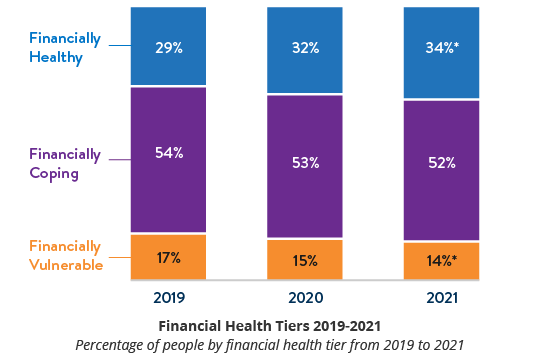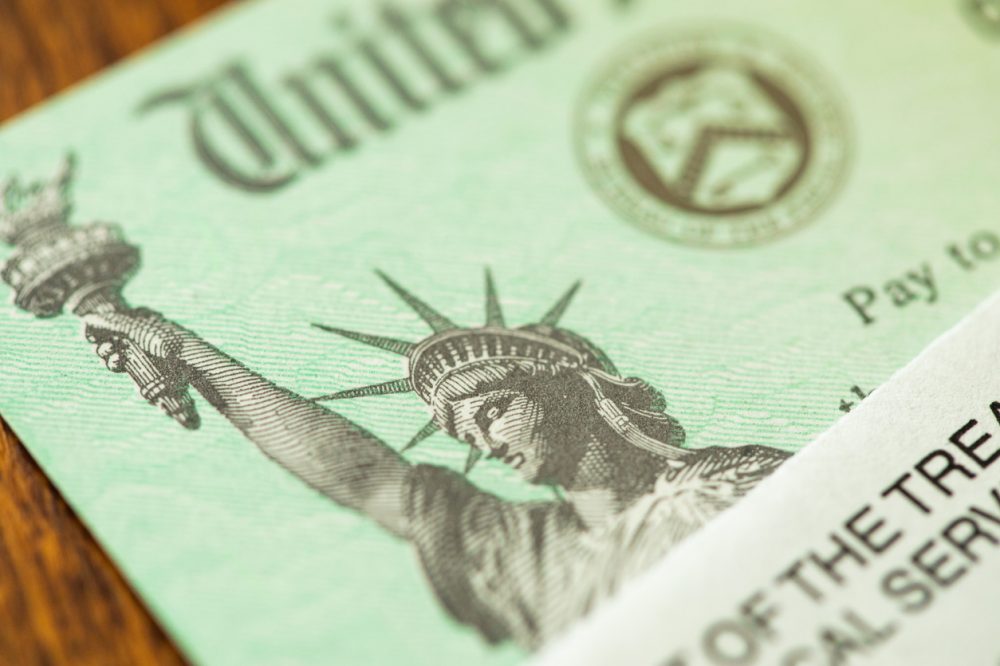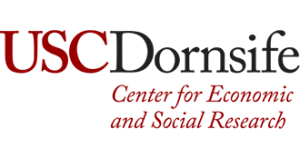Financial Health Pulse: 2021 U.S. Trends Report
Discover how Americans’ financial health outcomes have changed as COVID-19 continued to create unprecedented disruptions.
By Andrew Dunn, Jess McKay, Necati Celik, Ph.D., Thea Garon
-
Program:
-
Category:
-
Tags:

Financial Uncertainty in America
As the pandemic continued for a second straight year, whose financial health improved and who’s still at risk? The Financial Health Pulse® 2021 U.S. Trends Report reveals that although more people are now considered Financially Healthy, stark disparities remain across gender, race/ethnicity, and income. Explore this research for insights that can help shape a more equitable financial future for all.

Top Takeaways

Overall financial health improved again, but two-thirds of Americans are still not Financially Healthy.

Asian American, Black, Latinx, and people with income under $30,000 experienced significant financial health increases.

The gender gap in finhealth has expanded, with women struggling more than men.

Government programs reached those in need but recipients may be at risk as these policies expire.
Overall Financial Health Improvements
Financial health improved for the second consecutive year, as government relief programs and personal spending reductions related to the pandemic continued. However, two-thirds of Americans are still not considered Financially Healthy and racial disparities remain wide.
-
- 34% of Americans are considered Financially Healthy – a significant increase from 2020.
- The growth in the proportion of people considered Financially Healthy was driven by
positive trends in many financial health indicators, with the largest improvements occurring in ability to pay bills, amount of short-term savings, and credit scores.
Race and Income Gaps
Relief programs appear to have had profound effects on the financial health of historically marginalized groups. Black, Latinx, and Asian American people, as well as people making less than $30,000 in household income, saw significant gains in their financial health over the past year.
Growth of Financially Healthy people by race and ethnicity or income (2020-21).
-
- Asian American: +11%
- Black: +9%
- Latinx: +4%
- Less than $30,000 household income: +2%
Gender Gaps
Women faced more employment disruptions and child care responsibilities compared to men, leading to a larger gap in the financial health between men and women. Women whose work was disrupted by child care responsibilities were 45% more likely to experience financial stress due to the pandemic than those who weren’t disrupted.
The Role of Government Interventions
People considered Financially Vulnerable were more than three times more likely to
report receiving government relief than those considered Financially Healthy. People who received mortgage or rent relief were 8.9 percentage points less likely to experience increased housing insecurity in 2021 relative to 2020. Child tax credits will continue to provide a buffer for some but many relief program recipients are ineligible for these credits.
Conclusion
While financial health improved in the aggregate, many individuals may face growing financial challenges as government policies expire. Policymakers, financial services providers, employers, healthcare providers, and other stakeholders have a unique opportunity to use these findings to design policies and solutions that support the long-term expansion of financial health.
Our Supporters
The Financial Health Pulse is supported by the Citi Foundation, with additional funding from Principal Foundation.


The Financial Health Network is collaborating with the University of Southern California’s Dornsife Center for Economic and Social Research to field the survey to its online panel, the Understanding America Study.

Study participants who agree to share their transactional and account data use Plaid’s data connectivity services to authorize their data for analysis.

Written by
Financial Health Pulse: 2021 U.S. Trends Report
Explore the trends. Discover new insights. Build stronger strategies.



